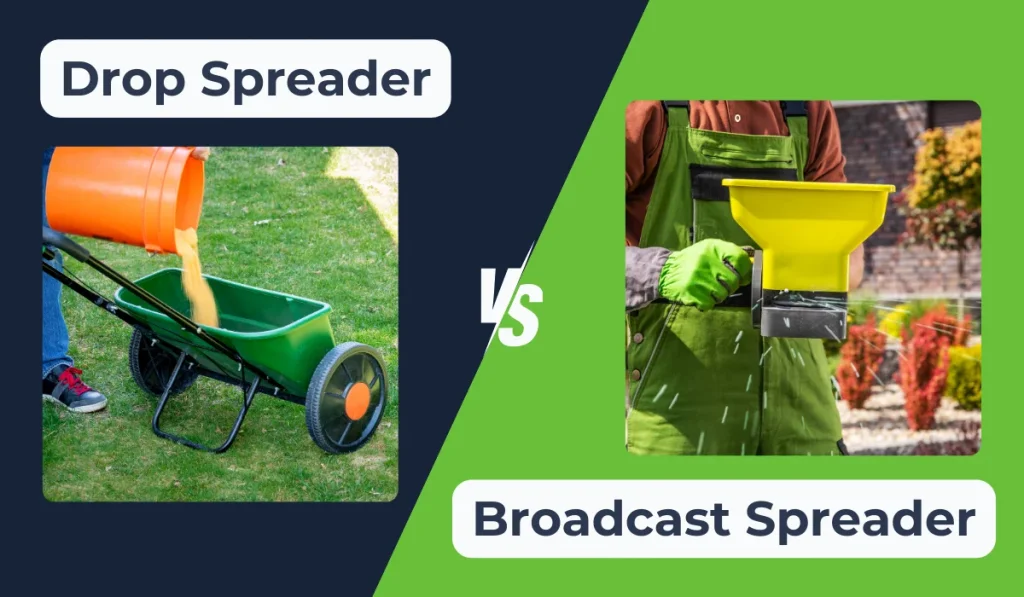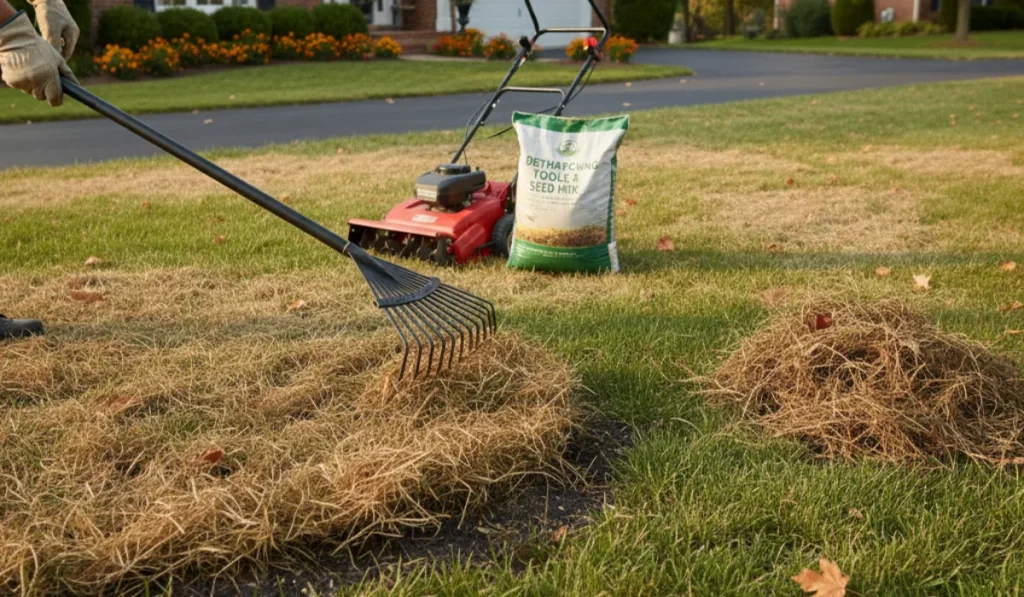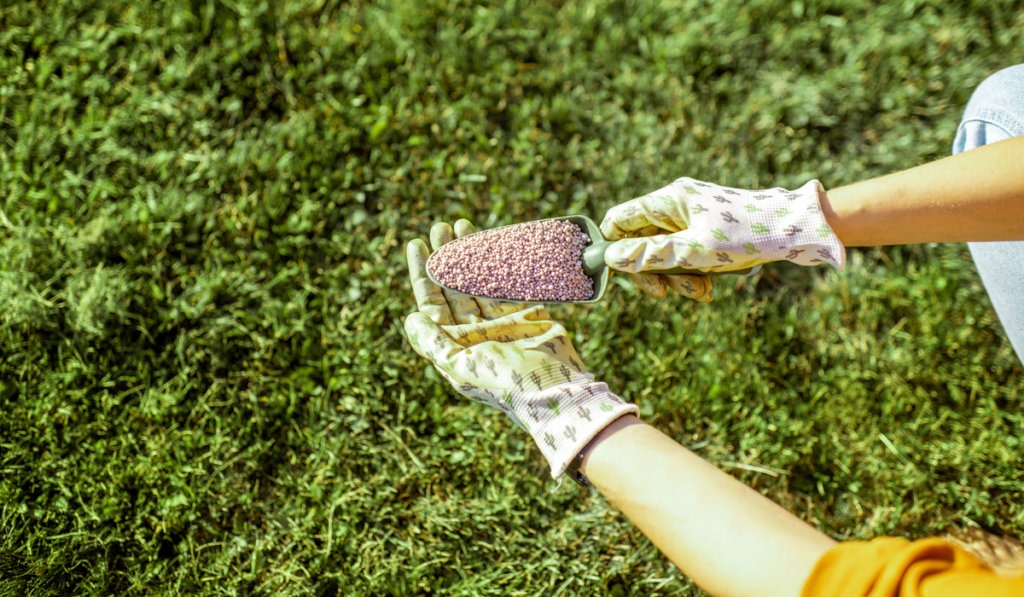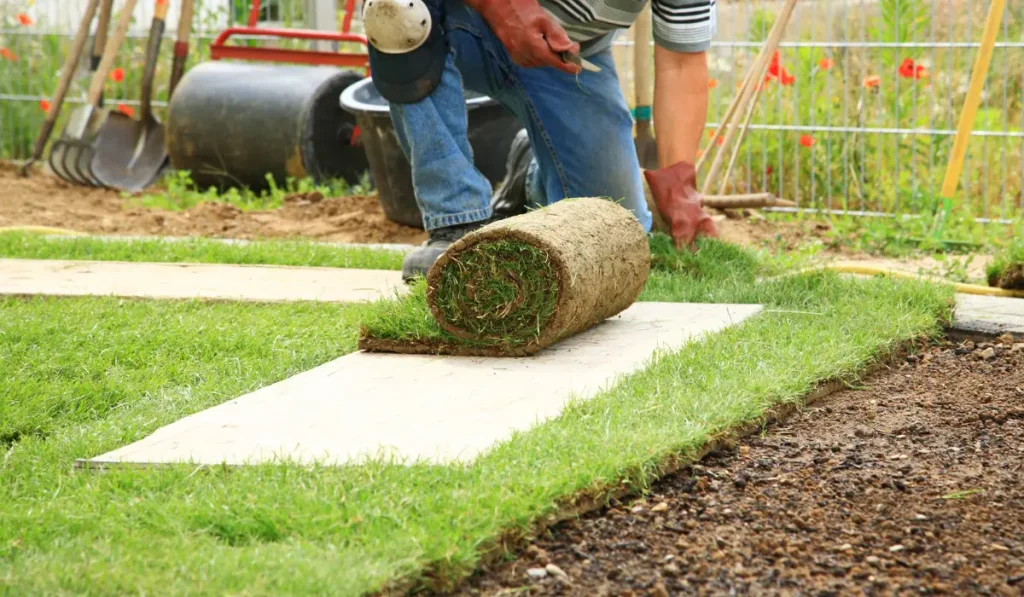When it comes to lawn maintenance, applying grass seed, fertilizer, or other granular lawn care products evenly is key to getting great results. If you’ve ever found yourself staring at the aisle full of lawn spreaders at the hardware store, you might be wondering, “Do I need a drop spreader or a broadcast spreader?”
The answer depends on your lawn’s size, layout, and your goals for coverage. Let’s break down the real differences and help you decide which one’s right for your yard.
Key Takeaways
- A drop spreader gives more accurate control and is better for small lawns and areas with tight spaces.
- A broadcast spreader covers wide areas quickly and works well on large lawns without many obstacles or barriers.
- Drop spreaders are easier to calibrate and less affected by wind, but require more passes and frequent refills.
- The best spreader depends on lawn size, the product type, calibration needs, available storage, and how much you spend.
Drop Spreader vs. Broadcast Spreader

Here’s a side-by-side breakdown of how drop and broadcast spreaders operate, what they’re typically used for, and what makes them different:
| Features | Drop Spreader | Broadcast Spreader |
|---|---|---|
| Distribution Mechanism | Granules drop directly between the wheels | Spinning disk throws granules in a wide arc |
| Spread Width | Matches spreader width, typically 18–22 inches | Can exceed 6 feet depending on the model |
| Spreader Type Options | Primarily walk-behind models | Walk-behind, tow-behind, ATV-mounted |
| Control Features | Manual flow control, precise line stops | Includes EdgeGuard or deflectors for edges |
| Calibration Complexity | Easier to calibrate due to limited variables | Requires more attention to the spread rate |
| Wind Sensitivity | Minimal impact from wind | Spread pattern affected by wind |
| Common Use Materials | Fertilizer, grass seed, ice melt | Fertilizer, grass seed, herbicides, and pesticides |
How Each Spreader Works & When to Use It
Both drop and broadcast spreaders are designed to help you apply granular lawn care products, but they work very differently.
Here’s how each type of spreader works and the situations where they shine.
Drop Spreader
A drop spreader distributes lawn care products in a straight, narrow path that’s about the same width as the spreader itself. As you push the walk-behind spreader across your lawn, granules fall directly beneath it through calibrated holes.
Best For: Homeowners with small lawns or tight landscaping, especially when working around driveways, flower beds, or walkways. If precision is important, like when overseeding specific patches, drop spreaders give you better control.
Broadcast Spreader
Broadcast spreaders, also known as rotary spreaders, use a spinning disk to “throw” granules out in a wide arc. They can cover a much larger area in less time.
Best For: Large lawns or open spaces where coverage speed is a priority. Tow-behind models for mowers or ATVs can make fast work of big areas, but even walk-behind types are great for medium-to-large yards.
What to Consider When Choosing a Spreader
Before you settle on a spreader, there are a few key factors worth thinking through. Here’s what to consider:
Coverage Area
Think about your total square feet. For small areas, a drop spreader’s precision is an advantage. But for large lawns, especially over 10,000 square feet, a broadcast spreader saves time and fewer refills.
Product Type and Application Rate
Fertilizers, grass seeds, herbicides, or even ice melt can vary in granule size. Drop spreaders handle small, uniform granules well. Broadcast spreaders can struggle with fine or lightweight materials, which may blow away or clump.
You also need to think about spreader settings and calibration. Improper settings can lead to uneven application, wasting products or harming your lawn.
Landscaping Layout
Do you have a lot of flower beds, walkways, or driveways?
EdgeGuard technology in some broadcast spreaders helps limit spread, but drop spreaders naturally avoid scattering granules where you don’t want them.
Ease of Use and Storage
Broadcast spreaders often take up more space and are heavier, especially tow-behind or larger walk-behind models. Handheld spreaders work in small areas but aren’t practical for larger jobs.
Budget
If you’re on a tighter budget, drop spreaders generally cost less upfront. However, keep in mind the long-term value—broadcast spreaders can reduce your time and product use over multiple applications.
Frequently Asked Questions
Can I use the same spreader for different lawn care products throughout the year?
Yes, but you should thoroughly clean the spreader between uses to prevent residue buildup and avoid cross-contamination between fertilizers, pesticides, herbicides, or ice melt products.
What should I do if my spreader clogs during use?
Stop immediately, clear any damp or clumped granules from the hopper, and check for blockages in the chute or gate before resuming application to avoid uneven spreading.
Are there any spreader accessories that improve performance or ease of use?
Yes, accessories like hopper covers, side deflectors, and spreader mats can reduce waste, improve precision, and make operating your spreader cleaner and more efficient in varied conditions.



